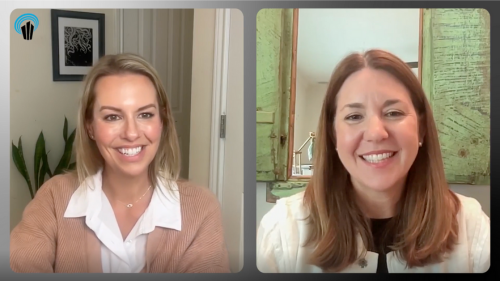State Of The Industry: The Macro-Shift In Consumer Feedback
This interview originally ran on Automotive News’ Executive Insights Q&A series.
In today’s feedback economy, consumers exercise their voice at will across an ever-increasing number of channels. Some of this feedback is solicited and some unsolicited. How can dealerships leverage feedback to attract more customers and create loyal advocates out of existing customers? Here, Dave Mingle, Vice President of Product at Reputation, the leading reputation management platform for the automotive industry, discusses how extracting insights from holistic data can drive strategy and lead to success.

Automotive News: How have recent trends in feedback shifted for location based businesses like automotive dealership groups in recent years?
Dave Mingle: The two words that come to mind are “growth” and “trust”. There has been an explosion of customer feedback on public-facing social media and review platforms, and that feedback is increasingly influencing how consumers decide which brand or dealer they will choose. The experiences you deliver, as measured by customer sentiment – that is, what your customers are saying and how they rate the experiences you deliver – mean more in the feedback economy than your brand promise or sales pitch. These days, customers aren’t choosing you based on your salespeople or marketing alone. They’re ultimately choosing you based on your reputation.
Automotive News: What kind of challenges does this increase in feedback data present to automotive dealerships or dealer groups trying to scale?
Dave Mingle: There are a lot of challenges, but I’ll highlight two. First, is an overall lack of a holistic, singular view of data across the whole customer journey. When dealers use multiple, siloed tools to collect and analyze data, it leads to gaps in understanding that journey. Dealers are missing opportunities to improve because they aren’t seeing the full picture. The pain points can change if you’re only looking at structured feedback or unstructured feedback versus seeing them both. The second is internal misalignment on the importance of feedback and how to act on it. For example, different teams may handle online, sales, and service experience feedback, resulting in inconsistent customer communications or lack of coordination on actions taken to repair the customer experience. All of that is made harder still, if there isn’t an internal expert that can guide an organization to act on feedback.
Automotive News: How has this affected agility and the ability to get in front of customer experience issues in automotive?
Dave Mingle: The biggest issue is a lack of action or slow action being taken on customer feedback. The proliferation of data makes collecting and analyzing feedback arduous. Think about the last time you left a review for a business and how long it took them to respond, if they did at all. These days feedback is instantaneous and customers expect their brands to respond just as quickly. And responding alone is not enough. Success requires taking action in ways that continuously improves the customer experience. If you’re an automotive dealership, you want to move from reactive to proactive to avoid always playing catch-up.
Automotive News: These issues are more multifaceted compared to traditional challenges so how can automotive dealerships respond and thrive?
Dave Mingle: To scale listening and taking action on customer feedback, automotive dealers need to adopt platforms that consolidate their customer feedback in one place, can provide actionable insights in real-time, and include purpose-built workflows to make it easy for teams to take and track actions taken. Bringing order out of chaos along with individual location level granularity go a long way toward making a successful feedback model. Modern reputation performance management platforms also allow brands to benchmark themselves against their competition. Sometimes comparing your own locations to each other isn’t enough to give you a leg up, especially in densely populated areas where you’re not the only game in town. If done well, these platforms often create a win-win-win… lower costs, lower complexity, and more powerful and actionable insights.
Automotive News: If automotive brands evolve and are able to overcome these issues, what rewards can they expect?
Dave Mingle: In short, auto brands can expect to win more business – more foot traffic, increased customer loyalty and higher sales. Imagine understanding everything your customers say, feel and perceive about your brand. If dealers can harness all this data into a unified view of actionable insights, they can create personalized experiences, tailor products and services to specific audiences, and even create an advantage against local competition. And remember changing from reactive to proactive? If a dealership can spot trends they’ll be able to anticipate the needs of their customers. This is huge when you’re trying to prepare for the future. All of this allows an auto brand to deliver memorable customer experiences and that fuels growth.
Automotive News: Do you have any real life examples of an organization being faced with these challenges, responding and reaping the rewards?
Dave Mingle: There are many, but the one that comes to mind is Ken Ganley Automotive Group. They’re a large dealer group based in Ohio and they needed to streamline their approach to third party customer feedback data. Different dealerships were using different vendors to manage and respond to reviews and some weren’t tending to it at all. Weeks or even months were going by before reviews were responded to and it was impossible to unify review protocol from the corporate level down. Ken Ganley eventually united all its dealers on a single platform that standardized and simplified their review management. This made that critical reputation channel become a tool in their belt to drive leads. Not to mention freeing up their time to focus on selling cars. The results were impressive. They increased their review volume across all platforms by 15% and bumped up their average star rating across all platforms to 4.7. This is a perfect example of the win-win-win scenario I mentioned above.
This interview is accompanied by a webinar conversation which covers the new deciding factor in consumer buying decisions. Click the button below to watch!










